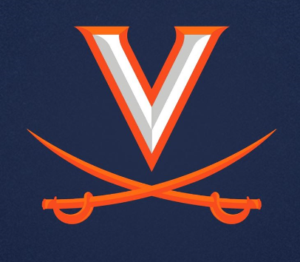
by James A. Bacon
Ever alert to signs of racism so subtle that most people can’t see them, the University of Virginia has altered its new V-Sabre logo to remove curves that had been added to the sword handles. At the unveiling of the original logo, the university had noted that “detail was added to the grip of the sabres that mimics the design of the serpentine walls found on the Grounds.”
The serpentine walls have long been revered as one of a highlight of Thomas Jefferson’s design of the original university lawn, pavilions and environs. But Mr. Jefferson erected the walls for the purpose of keeping slaves out of view. Ergo, in the words of Virginia athletics director Carla Williams, there was a “negative connotation between the serpentine walls and slavery.”
Williams apologized to those who “bear the pain of slavery in our history.”
Interesting. As best I can tell, Williams has never apologized to those who bear the pain of the $28,335 cost of attendance (2019-20 academic year) at the University of Virginia, a cost that has increased 14% in just four years and, even with financial aid, causes disproportionate hardship on poor minorities who attend the university.
She has never apologized for the $8,700 per student (see previous post for details) expenditures on administrative overhead every year, the second highest among Virginia’s public universities. Nor has she apologized for her $566,500 salary (2018-19), much less the $963,000 salary of her boss, UVa President James E. Ryan, or the university’s many extravagances, such as the $42.5 million Rotunda renovation.
Never forget: Higher-ed institutions are structured to extract wealth from students, often causing them to graduate tens of thousands of dollars in debt, in order to pay for the pay, perks, and tokens of prestige that are so important to the faculty-administrative elite. Controversies over such frivolities such as the filigree on the sabre grip of a school logo serve the function of distracting students, alumni, politicians and the media from this incontestable reality.

Leave a Reply
You must be logged in to post a comment.